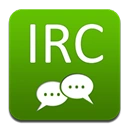
Gnomon Hard Surface Shading and Texturing
In this DVD Neil introduces his pipeline for shading and texturing hard surface models. This pipeline can be applied to any high-res model, such as models for photoreal effects work, animated feature films, ride films or video game cinematics. In the first part of the DVD, he discusses reference gathering, how to make a visual details list, and common shaders. Next he outlines all of the major methods for placing patterns on your surface, their advantages and disadvantages, and ways of creating patterns, including procedurals, photo manipulation and hand painting. The lecture includes practical demos in Adobe Photoshop? and 3d Studio Max?, using the Scanline, Brazil and Mental Ray renderers. In the second part, he uses the theory and pipeline from part one to shade and texture a 2000+ object robot character and simple environment using 3ds Max, Photoshop and Brazil. With a focus on texturing thousands of objects fast and efficiently, this intermediate level course is useful for any 3d application or renderer and will add many new tricks to your personal arsenal.
Continue Reading














